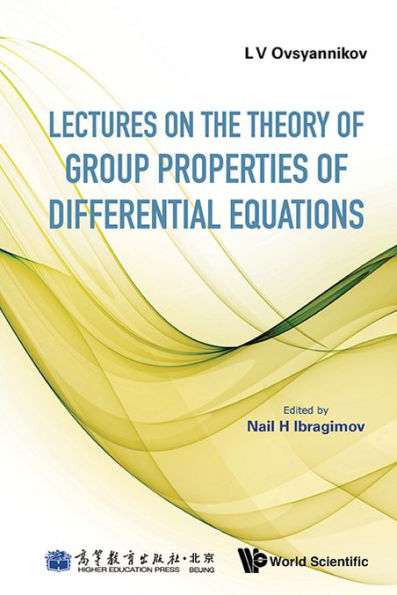Table of Contents
Editor's preface v
Preface vii
1 One-parameter continuous transformation groups admitted by differential equations 1
1.1 One-parameter continuous transformation group 1
1.1.1 Definition 1
1.1.2 Canonical parameter 3
1.1.3 Examples 4
1.1.4 Auxiliary functions of groups 5
1.2 Infinitesimal operator of the group 7
1.2.1 Definition and examples 7
1.2.2 Transformation of functions 9
1.2.3 Change of coordinates 10
1.3 Invariants and invariant manifolds 12
1.3.1 Invariants 12
1.3.2 Invariant manifolds 14
1.3.3 Invariance of regularly defined manifolds 15
1.4 Theory of prolongation 17
1.4.1 Prolongation of the space 17
1.4.2 Prolonged group 18
1.4.3 First prolongation of the group operator 19
1.4.4 Second prolongation of the group operator 22
1.4.5 Properties of prolongations of operators 24
1.5 Groups admitted by differential equations 28
1.5.1 Determining equations 28
1.5.2 First-order ordinary differential equations 30
1.5.3 Second-order ordinary differential equations 32
1.5.4 Heat equation 34
1.5.5 Gasdynamic equations 42
1.6 Lie algebra of operators 47
1.6.1 Commutator. Definition of a Lie algebra 47
1.6.2 Properties of commutator 49
1.6.3 Lie algebra of admitted operators 51
2 Lie algebras and local Lie groups 53
2.1 Lie algebra 53
2.1.1 Definition and examples 53
2.1.2 Subalgebra and ideal 54
2.1.3 Structure of finite-dimensional Lie algebras 55
2.2 Adjoint algebra 57
2.2.1 Inner derivation 57
2.2.2 Adjoint algebra 58
2.2.3 Inner automorphisms of a Lie algebra 60
2.3 Local Lie group 61
2.3.1 Coordinates in a group 61
2.3.2 Subgroups 62
2.3.3 Canonical coordinates of the first kind 64
2.3.4 First fundamental theorem of Lie 65
2.3.5 Second fundamental theorem of Lie 69
2.3.6 Properties of canonical coordinate systems of the first kind 70
2.3.7 Third fundamental theorem of Lie 71
2.3.8 Lie algebra of a local Lie group 73
2.4 Subgroup, normal subgroup and factor group 75
2.4.1 Lemma on commutator 75
2.4.2 Subgroup 77
2.4.3 Normal subgroup 79
2.4.4 Factor group 80
2.5 Inner automorphisms of a group and of its Lie algebra 82
2.5.1 Inner automorphism 82
2.5.2 Lie algebra of GA and adjoint algebra of Lr 83
2.6 Local Lie group of transformations 85
2.6.1 Introduction 85
2.6.2 Lie's first theorem 85
2.6.3 Lie's second theorem 87
2.6.4 Canonical coordinates of the second kind 88
3 Group invariant solutions of differential equations 91
3.1 Invariants of the group GNr 91
3.1.1 Invariance criterion 91
3.1.2 Functional independence 92
3.1.3 Linearly unconnected operators 93
3.1.4 Integration of Jacobian systems 95
3.1.5 Computation of invariance 96
3.2 Invariant manifolds 98
3.2.1 Invariant manifolds criterion 98
3.2.2 Induced group and its Lie algebra 98
3.2.3 Theorem on representation of nonsingular invariant manifolds 100
3.2.4 Differential invariant manifolds 102
3.3 Invariant solutions of differential equations 103
3.3.1 Definition of invariant solutions 103
3.3.2 The system (S/H) 106
3.3.3 Examples from one-dimensional gas dynamics 109
3.3.4 Seh-similar solutions m
3.4 Classification of invariant solutions 116
3.4.1 Invariant solutions for similar subalgebras 116
3.4.2 Classes of similar subalgebras 118
3.5 Partially invariant solutions 121
3.5.1 Partially invariant manifolds 121
3.5.2 Defect of invariance 123
3.5.3 Construction of partially invariant solutions 125
3.6 Reduction of partially invariant solutions 129
3.6.1 Statement of the reduction problem 129
3.6.2 Two auxiliary lemmas 132
3.6.3 Theorem on reduction 136
3.7 Some problems 139




